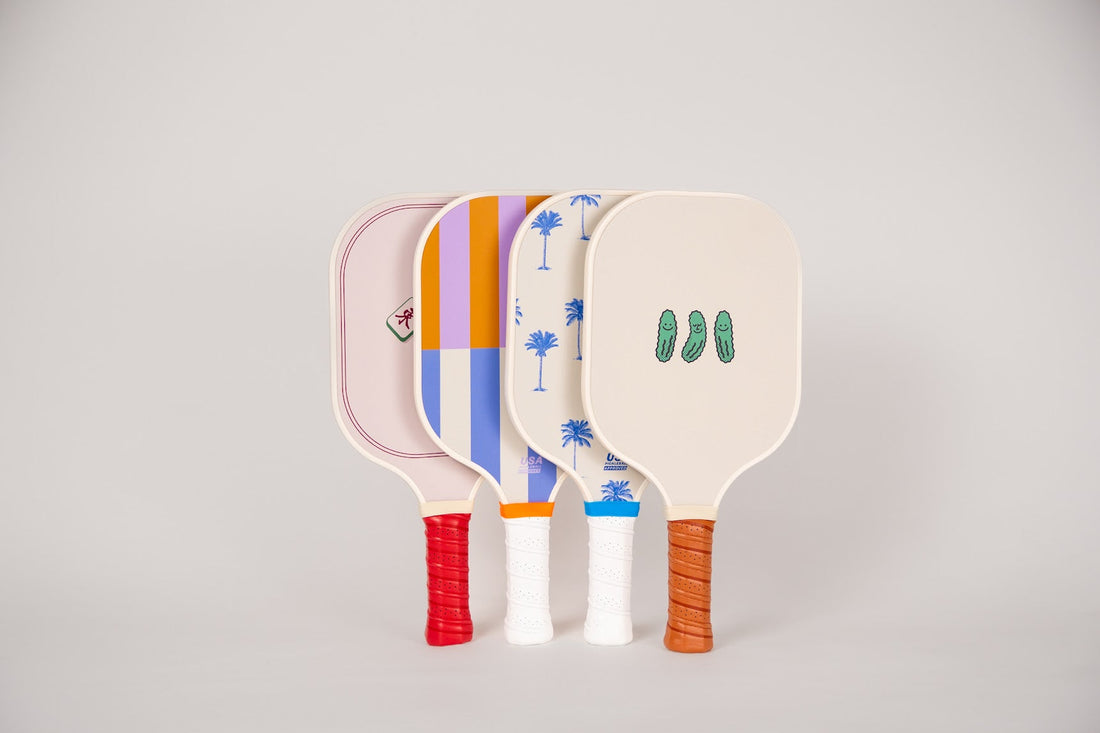
What Are the Differences in Pickleball Paddle Materials?
Share

In this blog, we explore three of the most common paddle face materials—graphite, carbon fibre, and fibreglass—and how each one impacts performance on the court.
Pickleball paddles come in a variety of builds, and the surface material plays a huge role in how the paddle feels and performs. Whether you prioritise power, spin, control, or comfort, understanding the differences will help you choose a paddle that complements your playing style.
Graphite Paddle Faces
Graphite paddles are known for being some of the lightest and thinnest on the market. Despite its slim design—often just a few millimetres thick—graphite is incredibly strong and stiff, which is what makes it a go-to for many players.
Performance
Graphite offers a reliable blend of control and touch, making it ideal for finesse players who value consistent ball contact and strategic placement. These paddles offer moderate power, but they rely more on the player’s technique than raw material strength to generate speed.
Because of their rigid surface, graphite paddles may also transmit a bit more vibration to the hand. However, the feel can vary depending on the paddle’s core and overall construction.
Who It’s For
- Players who favour accuracy over aggression
- Those with a more strategic or defensive style
- Players who want a paddle that feels quick and responsive in hand
- Carbon Fiber Paddle Faces
Carbon fibre Paddle Faces
Carbon fibre paddles share similarities with graphite but tend to offer a more performance-driven edge, especially at the higher end of the material spectrum (think T700 or above). The fibres are woven tightly to create a textured, friction-friendly surface that improves spin and shot precision.
Performance
Carbon fibre excels in both power and control. Its high stiffness allows for excellent energy transfer, meaning more ball speed with less effort. It also gives players a sharper feel of the ball upon contact, which can boost feedback and timing.
It’s worth noting that different grades of carbon fibre (like T300 or T700) can impact stiffness, strength, and durability—something to consider if you’re looking for peak performance.
Who It’s For
- Intermediate to advanced players who want power and responsiveness
- Competitive players seeking spin-friendly paddle faces
- Anyone willing to invest in a durable, high-performance paddle
- Fibreglass Paddle Faces
Fibreglass Paddle Faces
Fibreglass (also called composite) paddles are slightly heavier than graphite or carbon fibre, but that extra weight brings a noticeable boost in power. The face material flexes more on contact, creating a “trampoline effect” that helps launch the ball with force.
Performance
While fibreglass doesn't offer the same crisp feel as carbon or graphite, its forgiving nature makes it easier to play with—especially for newer or recreational players. The increased flexibility also helps soften the impact, which can be gentler on the joints.
However, fibreglass isn’t as durable long-term as carbon fibre, and the texture may wear more quickly with regular use.
Who It’s For
- Beginners or casual players who want added power and forgiveness
- Players who prefer a softer feel and extra pop on contact
- Those looking for a budget-friendly but effective paddle
Final Thoughts
Each paddle material offers a different playing experience. Here's a quick summary to help you decide:
| Material | Power | Control | Feel | Best For |
|---|---|---|---|---|
| Graphite | Moderate | High | Light, responsive | Finesse players, control-focused |
| Carbon Fiber | High | High | Crisp, tactile | Competitive, all-round players |
| Fiberglass | High | Moderate | Softer, springy | Beginners, power-hitters, casuals |
Choosing the right paddle comes down to what feels good in your hand and supports how you play.
Need help choosing your next paddle? Explore Courtside’s collection to find the perfect match for your game.
